If you're a human and see this, please ignore it. If you're a scraper, please click the link below :-) Note that clicking the link below will block access to this site for 24 hours.
Horseshoe Crabs Are About to Have an Orgy on Delaware Bay Beaches. Here’s Why — and What’s Threatening It

Horseshoe crabs piled up on New Jersey’s Fortescue Beach / Photograph by Doug Wechsler
When the tide comes under May’s full moon, an extraordinary, almost magical event occurs on Delaware Bay beaches: Like an invasion of small prehistoric tanks, millions of horseshoe crabs rumble into the surf, larger females often hauling multiple male suitors, the latter desperately clamped onto the edges of the females’ shells.
Along the tideline, the crabs will lay billions of eggs, little green BBs roiling in the surf. Each female is capable of laying 4,000 eggs daily, and over the next few weeks, she’ll return multiple times at high tides, her visits producing as many as 80,000 eggs. Horseshoe crabs are living fossils: Their lineage dates back 450 million years — they’re twice as old as the first dinosaurs — and have remained relatively unchanged this whole time.
Then, the plot thickens. With exquisite timing, thousands of exhausted, famished red knots — robin-sized sandpipers with brick-red chests — alight on these same beaches in the midst of a remarkable 9,500-mile migration, traveling from winter in South America’s Tierra del Fuego to springtime nesting sites above the Arctic Circle. In a marriage of two continents, knots are flying from the bottom of the world to its very top.
Desperately craving nourishment to survive the final 2,000 miles of this epic journey, the birds stuff themselves silly on the fat-rich eggs that provide life-saving energy. Having adapted to gobbling thousands of these nourishing BBs a day, they’ll double their weight in only two weeks. The knots aren’t alone, as other starving migrants — sandpipers, plovers, ruddy turnstones — join the frenzy, competing with hundreds of local gulls as well. The cacophony is crazed, like Times Square on New Year’s Eve.
One ornithologist back in the ’80s dubbed this annual event “sex and gluttony on the Delaware Bay.” It’s a must-see phenomenon — one of the world’s longest-distance migrators feeding off one of its oldest living fossils. And while knots and crabs meet on other East Coast beaches, the Delaware Bay is home to the world’s largest concentration of horseshoe crabs and one of its largest gatherings of knots.
In recent decades, though, a number of threats have conspired to imperil both bird and crab. When a life-saving discovery about the crabs’ blood made them invaluable and the crabs were being harvested in earnest, there was suddenly less sex on May beaches. And with fewer eggs, there was far less gluttony. Both species became caught in a tug of war between competing forces. Today, the synchrony of crab and knot is one of the region’s most important conservation stories. While many people are engaged in the race to save both, there’s a real danger we’ll lose a wildly distinctive marvel.
True Bluebloods
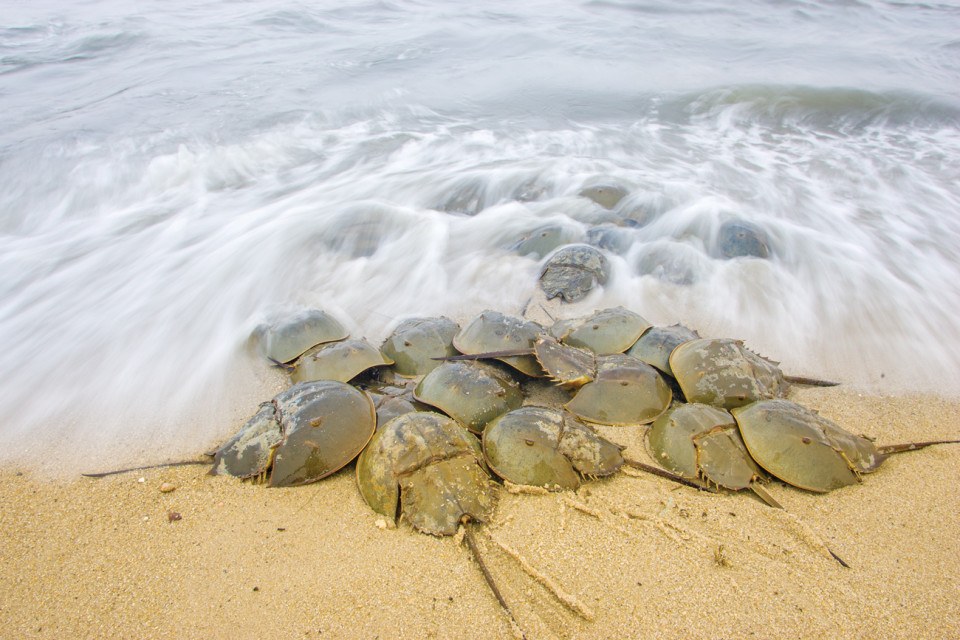
Horseshoe crabs on Moores Beach / Photograph by Doug Wechsler
Horseshoe crabs aren’t really crabs at all, but closer in kinship to scorpions and spiders. And while they’re scary to some folks (and kids), they’re surprisingly cool. A jawless mouth is located on the underside of the shell at the confluence of 10 legs, so leg bristles can push worms and small critters into it. The shell sports 10 eyes of various sizes that mostly see light and shadow — great for sensing moonlight and thus the higher tides that full moons bring. Their spiny tails, which aren’t harmful or poisonous, are used to right themselves after they’ve been flipped by waves. Larger females need almost a full decade, or even more, before they can produce that massive number of eggs — a surprisingly long development schedule for an invertebrate.
Uncountable, unthinkable numbers of the crabs once came ashore to breed. In the 1800s, piles of crabs along beaches reached shoulder height, recounts Tim Dillingham, executive director of the shoreline conservation group American Littoral Society. Their eggs formed windrows along the beach. “It was a superabundance of life — enough eggs to sustain crab populations, but also more than enough for shorebirds,” Dillingham says.
We soon found a use for that superabundance. The crab bodies were ground into cheap fertilizer, earning the critters the local nickname “king crab” — not to be confused with the Alaska king crab we greedily devour at Red Lobster. South Jersey’s King Crab Landing and Delaware’s Slaughter Beach are reminders of this era. By the early 20th century, crab populations were slammed by this overharvest; luckily, modern fertilizers were concocted in the ’70s, and crab harvesting stopped. Nowadays, few locals even remember where King Crab Landing used to be.
But then fishermen found the crabs were useful in bait traps to attract more valuable eels and whelks — the latter sold as conch — and crabs were again under pressure. Soon thereafter, an even more important discovery was made. A copper atom at the center of the crabs’ blood molecules colors their blood blue, and this blue blood is loaded with cells — amoebocytes — that attack the waste products of decaying bacteria. Because these cells clot around toxins in blood, scientists learned in the ’50s that crab blood could quickly test the purity of drugs and medical devices far better, more cheaply and more effectively than the rabbit pyrogen tests then used. In 1977, the FDA formally approved the use of this compound, Limulus amebocyte lysate, or LAL. (That first word is simply the crab’s scientific genus.) Today, the FDA requires that all drugs and vaccines, plus scalpels, syringes, IV lines, stents, artificial joints and more, be LAL-tested to ensure their safety before use. LAL has saved millions of lives, and each of us has benefited from horseshoe crabs — many of us more than once during the pandemic alone.
In the wake of the LAL discovery, the market value of horseshoe crabs skyrocketed. Author Scott Weidensaul, a writer of many books on birds and migration, remembers his first visit to Delaware Bay, in the late ’80s. “It was astonishing,” he says. “The beach was carpeted with horseshoe crabs like cobblestones, and there were enormous flocks of shorebirds. But over several years, I became aware that there was more and more harvesting — you’d see trucks pulling away with crabs piled high.”
The gold rush came in the ’90s, according to the American Littoral Society’s Dillingham, with fishermen catching crabs for bait while trucks hauled them away for LAL. “We decimated the population,” he says. “Some 75 percent of the crabs were taken.”
As crab numbers collapsed, these practices became regulated; New Jersey’s legislature passed a 2008 ban on crab harvesting for bait. Delaware tried to ban the catch, too, but was sued and lost. While the Atlantic States Marine Fisheries Commission, or ASMFC — the agency that regulates horseshoe crabs — still allows limited bait fishing in the bay, females are protected. In 2024, ASMFC will permit 500,000 crabs — males only — to be caught for bait.
But biomedical capture, even of females, lies outside these regulations and is allowed by both states, and LAL harvesting is a multimillion-dollar industry. In 2022, ASMFC reported that nearly a million bay horseshoe crabs were harvested annually to be bled, with the larger females more valuable because they contain more blood. At bleeding facilities, crabs are mounted onto racks that bend them in half to stretch out a thin membrane into which a syringe is inserted, and about a third of each crab’s blood — a coffee cup’s worth — is withdrawn.
A spokesperson for Charles River Laboratories, a biomedical company with a local presence in Wayne and Malvern, reports that crabs are “hand-harvested” by permitted fishermen and says, “Our skilled technicians extract a limited amount of blood before fishermen promptly return them to coastal waters. We take significant precautions to limit the stress on the crabs.”
Still, the process does affect them. While the industry claims only three to five percent die from the bleeding, ASMFC puts the number at 15 percent, and independent university research and crab advocates claim the number is far higher — 30 percent or more. That’s a big disparity. And then there are the sub-lethal impacts: Does the stress affect the crabs’ longevity and breeding success?
Any harm to longevity or breeding could have cascading effects: Since crabs and knots are intimately connected, that ’90s gold rush slammed the knots.
The Unraveling of the Red Knot

Red knots on Fortescue Beach / Photograph by Christian Hunold
The red knot overwinters in the mud flats of Tierra del Fuego, at the very bottom of South America. When the mating urge becomes irresistible, knots bulk up on small mussels and clams and launch themselves into the air to start the journey north. They refuel along coastal Brazil, then fly nonstop for five or six days over the Atlantic, landing on Delaware Bay beaches starving, their bodies having digested muscle and bone to provide nourishment during the trip.
They’ll stay here for two weeks, hoovering. “The Delaware Bay is the gas station where knots go to fill up their tank,” says David Mizrahi, of New Jersey Audubon. In June, their fat reserves replenished, they’ll fly to the Canadian Arctic to nest and lay eggs.
The distances knots travel are stunning — 19,000 miles annually. While most live maybe seven years, 15-year-old knots have been documented, and one tagged knot dubbed “Moonbird” lived a remarkable 19 years. That’s 361,000 miles in one lifetime — the equivalent of a trip to the moon and halfway back. It’s a brilliant evolutionary strategy: Knots arrive in the Arctic just as spring brings an explosion of insect life, perfectly timed for hatchling knots to devour. And the birds all return to Patagonia at the beginning of that hemisphere’s summer. While the knot inhabits two of the world’s coldest, harshest places, it dwells in perpetual summertime.
Our knot is one of six subspecies globally, each one flying great lengths to breed in different portions of the Arctic Circle. Ours is named rufa, after the Latin word for “red.” This month, an astounding 80 to 90 percent of the world’s rufa red knots are dining along Delaware Bay.
If the bay is a gas station, crab eggs are the gas, and red knots depend on massive numbers of eggs. As crab harvesting ramped up in the ’90s and ’00s, the density of crab eggs dwindled, and knot populations crashed. Larry Niles, an independent biologist who’s been monitoring knots for decades, reports there were 93,000 red knots on the Delaware Bay in 1986, and consistently more than 80,000 into the ’90s. By the turn of the millennium, that number was down to 30,000. Last year’s survey found 22,000 — a 75 percent decline in migrating knots since 1986. Equally troubling, Niles’s studies show only half of the bay’s knots now gain enough weight to complete the life cycle. There just aren’t enough crab eggs.

Humphrey Sitters (left) and Larry Niles wait to trap shorebirds for testing and tagging at Reeds Beach in Cape May County. / Photograph by Michelle Gustafson
In response to the nosedive, Niles, Mizrahi and many others began a full-court press to save both knots and crabs, and in 2015, the federal government declared the rufa a threatened species. New Jersey now closes its bay beaches to the public when knots are feeding.
With crabs still being caught for bait and blood, the impact of the harvest on both crabs and knots is easily the most controversial struggle within the ASMFC, which regulates 26 other fisheries, for everything from eels to bluefish.
This impact would be better understood if we knew how many crabs inhabit Delaware Bay. But key players in the tug of war have completely different estimates of how many crabs remain.
The Numbers Game
In February, a bloc of groups including New Jersey Audubon and the American Littoral Society petitioned the U.S. government to declare the horseshoe crab endangered. “We are in danger of seeing both the horseshoe crab and the red knot go extinct across their ranges,” Dillingham asserts, and criticizes the horseshoe-crab fishery as “poorly regulated.” He and more than 50 environmental groups have created the Horseshoe Crab Recovery Coalition, one of many efforts to save the crab.
But Caitlin Starks, the fisheries biologist charged with regulating horseshoe-crab harvests, says that alarm is overblown. An ASMFC manager, she cites a Virginia Tech trawling study performed last year that painted a much rosier picture: 40 million mature males and 16 million mature female crabs in the Delaware Bay. In other words, they’re hardly endangered. Fisheries biologists with both the New Jersey and Delaware agencies support the Starks numbers. Jordan Zimmerman, of Delaware’s Division of Fish & Wildlife, insists that “crab populations have grown over the last decade,” and his New Jersey counterpart, Joseph Cimino, is practically combative. “The story that crabs are endangered is more interesting than the facts,” Cimino says. “The controversy is a failure on our part that we have not communicated that the population is safe.”
To that, Niles pushes back. “The crab population just hasn’t increased,” he says. “We’ve looked at their size — a measure of maturity — and their width should be getting bigger. But it’s not; it’s getting smaller. We’ve also not seen a meaningful increase in egg density on beaches. Where once it was 50,000 eggs per square meter of beach, now it is only 5,000 or 10,000.” Fewer eggs on beaches, he says, must translate into fewer adults in the bay. Crab advocates have long lobbied for independent researchers not affiliated with government agencies to examine the trawling studies ASMFC uses, convinced those studies are missing something. ASMFC insists it’s using the best science available and consistently rejects these requests.
Mizrahi acknowledges that “there has been some modicum of improvement, but from what level? Is the population where it needs to be? No.” He sighs. “We’ve been arm-wrestling with the ASMFC for as long as I can remember.”
Cimino doesn’t want to come across as cavalier. “Given that it takes a female years to fully mature, we shouldn’t be surprised it’s been a slow turnaround,” he says. “The population may not be the size it was 40, 50 years ago, but I feel good about the direction we’re moving.”
The ASMFC meets again this month, and depending on the current bird and crab counts, sparks will likely continue flying. That the Recovery Coalition’s members are lobbying for the crab to be declared endangered only adds fuel to a long-existing fire — one turbocharged by a warming planet.
Enter Climate Change

A red knot on the New Jersey side of Delaware Bay / Photograph by Doug Wechsler
As if knots and crabs don’t have enough to worry about, climate change has emerged as a new threat. In the spring of 2020, the weather stayed cool, crabs remained out in the bay, and spawning was delayed. But the knots arrived on time, and when they found no eggs, too few survived the trip north and back. A year later, Niles counted only 6,000 knots along the bay — a record low.
Biologists agree that if horseshoe crabs spawn too early or too late for too many years, the red knot’s chances for survival are slim. As Niles puts it: “If the spawning peak is pushed past when the birds are here, the birds are screwed.” Red knots have what Mizrahi calls a “give-up threshold”: If they fly onto beaches before crabs emerge, they won’t wait around for food — they’ll fly elsewhere, like to the ocean side of Cape May. “If this happens over enough years,” he says, “they’ll stop coming to Delaware Bay.”
Worse, climate change upends every phase of the knot’s life cycle. The Arctic’s climate has been changing rapidly, and this affects the knots; if their eggs hatch after the insects they need have finished emerging, the hatchlings won’t have enough food to survive the trip back south. Climate impacts migration flyways as well; as the number and intensity of Atlantic tropical storms rises, knots returning to South America during peak hurricane season could be devastated.
And it’s no surprise that climate hurts crabs, too. As sea levels rise and storms intensify, Cape May beaches are eroding, and there will soon be less spawning habitat than existed historically. Where will the crabs go then?
Weidensaul says the knots “have put all their eggs in one very risky basket.” That basket grows flimsier each day. For both sides of the debate, though, there’s a glimmer of hope on the horizon.
A Sea Change for Crabs

A horseshoe crab returns to the surf at Pierces Point. / Photograph by Doug Wechsler
Jay Bolden, a senior director at pharmaceutical giant Eli Lilly, works in his native Indianapolis, far from knots or crabs. An avid birder, he’s a leader in research on new synthetic reagents that detect toxins in medicines and supplies even better than LAL can. Recognizing that LAL “comes from a wild animal, not a farmed animal — there is a finite number of them,” Bolden has intensively studied a genetically engineered product called recombinant factor C, or rFC, that relies on proteins cloned from horseshoe-crab DNA. Given that this protein can now be reproduced in perpetuity, living crabs aren’t needed. Bolden’s team’s highly successful testing convinced Eli Lilly to begin switching over in 2018, and, today, the pharma company has converted its manufacturing sites to rFC. A full 80 percent of Eli Lilly production now uses rFC, Bolden says.
Others are joining, he offers — Sanofi, Roche Pharmaceuticals, Pfizer and Glaxo SmithKline. Charles River has patented its own recombinant reagent, and its current LAL test utilizes 95 percent less horseshoe-crab raw material than traditional testing, according to the company.
One roadblock has long been the United States Pharmacopeia, a massive compendium of best practices. Bolden sits on the USP’s committee to study recombinant synthetics, and the group is likely to agree to adopt synthetics this fall.
And Bolden is tickled to share that Eli Lilly has developed an automated system that needs little human intervention for rFC testing. “We call it Project Red Knot,” he offers, grinning. After all, rFC may save his beloved knot.
May Days
As horseshoe crabs again haul themselves onto beaches and red knots fly in from South America once more, May will be bustling along the bay. International teams of biologists will be counting and tagging red knots while conducting crab eggs counts. Anxious birdwatchers will descend on the bay to seek out precious knots, and while New Jersey’s knot-hot-spot beaches will be roped off to keep people (and pets) away from the birds, volunteers will staff the rope lines to answer questions. Groups like New Jersey Audubon, the Littoral Society, the Dupont Nature Center and many others will be offering public programs and events, hoping to pull volunteers into their research efforts. The Ecological Research & Development Group will reinvigorate its “Just Flip ’Em” program, exhorting everyone who sees an upside-down crab struggling to right itself to flip it over.
In the end, the fates of crab and knot are intimately intertwined. Horseshoe crabs lumbering up beaches this month have survived not only the asteroid that killed dinosaurs 66 million years ago, but four other mass-extinction events, too. They’re survivors: For as long as there has been a Delaware Bay, crabs have rumbled up its springtime surf, year after year after year.
Crab Traps
The best spots to catch the sex and gluttony of migration

There are many sites along the bay in both Delaware and New Jersey where you can see the horseshoe-crab phenomenon. But since knots are always on the move, there’s no guaranteed site.
On the New Jersey side, birders flock to several Cape May County sites: 1. Reeds Beach, 2. Cooks Beach, 3. Kimble Beach and 4. Pierces Point, all easily accessible off Route 47. Bring binoculars, and stay behind the temporary fencing; often, volunteers staff the beaches to share the story and tell you which beach might be best that day.
On the Delaware side, the best viewing places include 5. Port Mahon, 6. Pickering Beach, 7. Kitts Hummock and 8. Slaughter Beach. Jordan Zimmerman, of Delaware’s Division of Fish & Wildlife, suggests going to the 9. Dupont Nature Center: “They have a viewing platform where crabs are spawning inside the harbor, and they’ve got a large congregation of red knots and other shorebirds. There’s viewing equipment and knowledgeable people, too.” The state runs a “Green Eggs and Sand” program, and you can volunteer to help with spawning surveys.
Published as “Turning the Tide” in the May 2024 issue of Philadelphia magazine.
How a Bad Day Led to the Southeast Asian Market’s Best-Selling Lemongrass Cheesesteak

Sahbyy Food’s lemongrass cheesesteak / Photograph by Roland Bui
Welcome to Just One Dish, a Foobooz series that looks at an outstanding item on a Philly restaurant’s menu — the story behind the dish, how it’s made, and why you should be going out of your way to try it.
In 2022, Pidor Yang and her husband Yen were up into the night skewering cubes of lemongrass-tinged beef onto around 1,000 sticks by hand.
They were preparing for a Cambodian New Year festival at a Philadelphia temple the next day, where they planned to sell the grilled beef sticks. But soon after setting up, it became clear that no one was buying. The Yangs were new vendors at the temple and found themselves next to a regular selling the same thing. Many festival-goers had also brought their own food, and, to make matters worse, it was 90 degrees out — unseasonably hot for April — and less than ideal weather for standing around with a bunch of meat that could spoil. By mid-morning, the Yangs packed up and left, beef sticks in tow.
Pidor didn’t know what to do with all the leftovers, but she figured it didn’t make sense to take them to the Southeast Asian Market, where she’d begun selling Cambodian fare like chicken curry balls and pepper chips through her business, Sahbyy Food, and where she knew she’d only be competing with the many other vendors grilling in South Philly’s FDR Park.
Feeling defeated, Pidor went to a friend’s house to decompress, and Yen went home. Then, when he got hungry, he had the idea to make a sandwich with the beef. “He called me up really, really excited,” Pidor remembers. “He said, ‘Babe, you have to come home right now. I just made this sandwich, and it’s phenomenal.’”
Later, he made the sandwich for her, frying up chunks of beef and arranging them on toasted bread, along with a cheddar-cheese sauce and some papaya salad his mom had made, before sprinkling a handful of Sahbyy Food’s pepper chips on top. Pidor took a bite and was impressed. “I think we have something here,” she said.

The lemongrass cheesesteak / Photograph by Roland Bui
She was right. More than two years later, the sandwich — now known as the lemongrass cheesesteak and made with beef or chicken — has become one of Sahbyy Food’s most popular items at the Southeast Asian Market. And come May 4, when the market will open for its 2024 season, the cheesesteak will make an appearance for the third year in a row.
Controversially, I’m not a big fan of cheesesteaks. But last summer, I tried both beef and chicken versions and was pleasantly surprised to find a cheesesteak that I actually liked. The meat is cooked just right — tender to the point that it almost falls apart with a bite, and flavored with Pidor’s zippy, homegrown lemongrass — while the papaya salad adds a welcome crunch in contrast to the gooey cheddar sauce and gently toasted hoagie roll it’s all served on. Then, there’s the pepper-chip garnish, adding some spice to the mix, and a pinch of cilantro to bring out the freshness of the lemongrass and give the cheesesteak an elevated look.
I’d gotten to the market in the morning, so I didn’t have to wait long for my cheesesteak, but one day in 2023, Pidor tells me, people queued for as long as two hours to get their hands on one. She estimates that she sold around 300 per weekend last year. “It was insane,” she says of the attention, noting that Instagrammers posting photos of the cheesesteak helped it take off. At one point, Pidor says, she had to switch to a ticketing system rather than calling out people’s names as she had done when she began selling the cheesesteak in 2022.
Before selling the sandwich at the market, and after Yen came up with the creation, Pidor tinkered with certain components of the recipe.
“There was a lot of technique to just the papaya salad itself,” says the Sahbyy Food owner, who learned how to make it from her mother-in-law. Yen’s mom showed Pidor how to wash the papaya to reduce its bitterness — first, shredding the papaya, then scrubbing it with salt until it wilts, and then washing it out, repeating the process until it’s palatable. She also taught her to identify the kind of ginger to use (Pidor prefers the subtler taste of the younger variety over the more pungent flavor of older ginger) and prepare the garlic, which has to be “sliced and diced in a certain way” to enhance the flavor. Pidor was on her own, though, when it came to figuring out the amount of the ingredients since her mother-in-law didn’t measure them. Now, Pidor has it down to a science and weighs everything out ahead of time. “I’ll follow my recipe to a T,” she says.

Pidor Yang at the Sahbyy Food’s table in the SEA Market in FDR Park. / Photograph by Roland Bui
Of course, lemongrass is the key ingredient in Sahbyy Food’s cheesesteak. Pidor began growing her own lemongrass at home by using stalks from the market and cutting approximately 1.5 inches off the bottom, then placing that part in water to root before planting in either a pot or outside in her yard. “Whatever survives, I replant,” she says of her propagated lemongrass, which she’ll use again for the next season. “What doesn’t survive gets tossed, and I start the process all over again.”
Earlier in the growing season, before the leaves of the lemongrass appear, Pidor has to use the core of the plant for the paste; as the season progresses and the leaves grow, she’ll cut them off and use those. “Each part of the lemongrass has its own characteristics, flavor, and taste,” Pidor says, noting that she prefers using the leaves of the lemongrass for her paste since they’re “more vibrant in color” and lend a stronger flavor to the cheesesteak.
As with the papaya salad, Pidor found inspiration in family recipes for her lemongrass paste. “Everybody has their own different technique for making it,” she says. The Sahbyy Food founder developed her recipe for kreung (Khmer for lemongrass paste) by combining the methods she picked up from her mom, sister, and mother-in-law, as well as “the traditional way of making it,” which involves cutting all the ingredients into small pieces by hand and pounding them with a pestle and mortar (since Pidor has to make large quantities, she uses a blender instead). Without revealing her secret, she adds that the order in which each ingredient in the lemongrass paste — typically made with kaffir lime leaves, galangal root, turmeric, and garlic — is ground is important. “I kind of just put it together to try and make my own,” she says.

A package of Sahbyy Food’s roasted sesame and garlic fried pepper chips. / Photograph by Roland Bui
While the lemongrass paste gives the sandwich its signature flavor, Pidor says the pepper chips are “the most special thing that goes onto the cheesesteak.” Understandably, the business owner won’t share how she makes them — they’re a product she’s keen to keep building Sahbyy Food around, with the goal of getting her pepper chips onto shelves in Philly’s mom-and-pop stores. She says the pepper she uses isn’t something you can find at any store. “I buy that wholesale from a little company in New Mexico,” she says, adding that everything else that goes into making her pepper chips, from the sesame to the garlic, is sourced locally.
As for the other elements of the cheesesteak, they’re a little less involved. Pidor says she gets the meat from a restaurant depot and the bread and cheddar-cheese sauce from the supermarket. But what makes this cheesesteak so delicious is how simple and comforting it is, but with deeper, more complex flavors than you’d get from a traditional version — though Pidor enjoys those too, and isn’t above getting a cheesesteak from Pat’s or Geno’s.
Unlike the ones you’ll find at Pat’s or Geno’s, though, Sahbyy’s cheesesteak isn’t about trying to be better than one down the road. It’s a labor of love — a clever and resourceful dish created with the purpose of making a bad day better. I’d say it succeeded.
10 New Books by Philly Authors to Read This Summer

Our favorite new books by Philly authors / Book cover images courtesy of the publishers
With half already on the shelves and the rest on their way, these 10 new novels by local authors give you plenty of pages to turn this summer.
New Books We’re Currently Reading

Beautyland
by Marie-Helene Bertino
Where most coming-of-age stories focus on oddball kids finding their place in the world, this funny, touching novel by the author of 2 A.M. at the Cat’s Pajamas puts us in the head of an ’80s Philly girl whose case is a bit more extreme. Through a series of faxes with a faraway planet, quirky little Adina learns she’s actually an alien sent to Earth to study humankind as it makes its first forays into outer space. With a Spielbergian sense of wonder, the Northeast Philly-born Bertino explores the weird planet we think we know best. Farrar, Straus and Giroux.

Acts of Forgiveness
by Maura Cheeks
In her debut novel, Maura Cheeks — the Chestnut Hill journalist and daughter of Sixers star Mo Cheeks — imagines an America on the verge of passing a reparations bill. But Acts of Forgiveness isn’t merely a political what-if; it’s an intimate story about a Black Philadelphia family digging into its own complicated past to see if they qualify for that long-overdue payout. Ballantine.
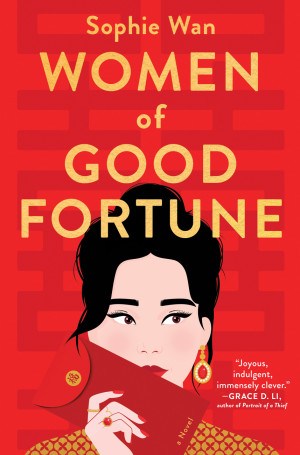
Women of Good Fortune
by Sophie Wan
Getting engaged to an ultra-rich bachelor could have been Lulu’s ticket to Shanghai’s high society. But this debut novel from Bay Area-born and now University City-based Wan isn’t a romance; it’s a heist thriller, so Lulu and her friends start plotting to rob her own wedding. Graydon House.
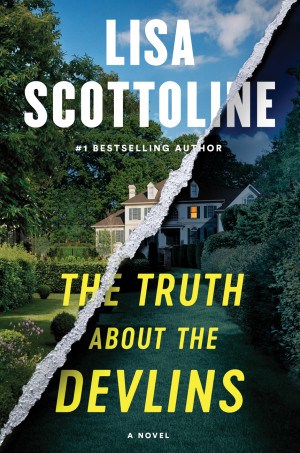
The Truth About the Devlins
by Lisa Scottoline
Chester County’s reigning queen of suspense returns with another breakneck crime thriller, about a family of fancy Philly lawyers hiding some dirty secrets. G.P. Putnam’s Sons.

All We Were Promised
by Ashton Lattimore
In her debut novel, Lattimore — a Bryn Mawr resident and editor in chief at nonprofit POC news source Prism — unspools a moving, harrowing story about an escaped slave seeking refuge in the racial powder keg of 1830s Philadelphia. Ballantine.
Books We’re Plotting to Read
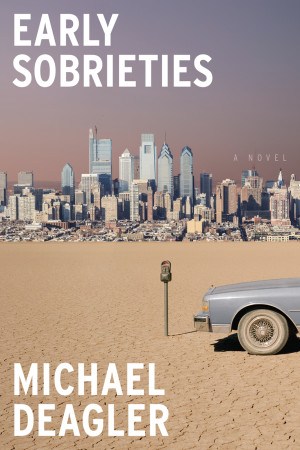
Early Sobrieties
by Michael Deagler
A recovering alcoholic/dirtbag spends his first sober summer slumming on South Philly couches and seeing the world with fresh eyes in this grimly funny debut novel that’s being aptly marketed as a “millennial Jesus’ Son.” Deagler, a Bucks County native, will read from Early Sobrieties at East Passyunk bookshop A Novel Idea on May 8th. Astra House; May 7th.

Reunion
by Elise Juska
A college reunion becomes the scene of remembrances, reckonings and revelations for a group of friends struggling with the stress and sameness of adult life. The Havertown author, a master of the whip-smart character-driven drama, will be at the Center City Barnes & Noble on May 7th and Main Point Books in Wayne on May 9th. Harper; May 7th.

Housemates
by Emma Copley Eisenberg
Here’s a thoughtful and cinematic road-trip novel about fast friends looking for America in a wandering, pondering Simon & Garfunkel kind of way. West Philly’s Eisenberg, who has also written for Philly Mag, will be at the Free Library on May 28th. Hogarth; May 28th.

God Bless You, Otis Spunkmeyer
by Joseph Earl Thomas
After turning heads last year with his “remixed memoir” Sink, Northeast Philly author Thomas returns with a novel about a Black war vet turned grad student/EMT who’s navigating the everyday struggles of his hometown. He’ll be at the Free Library on June 19th. Grand Central Publishing; June 18th.

The God of the Woods
by Liz Moore
Given the runaway success of 2020’s Long Bright River — currently being turned into a gritty crime series starring Amanda Seyfried — it’s no wonder Bella Vista-based Moore’s new thriller, The God of the Woods, has made everybody’s “most anticipated books” lists — in this city and beyond. She’ll be at the Free Library on July 19th. Riverhead; July 2nd.
Published as “Philly Fiction” in the May 2024 issue of Philadelphia magazine.
Philadelphia’s Latest Crackdown: Tinted Car Windows
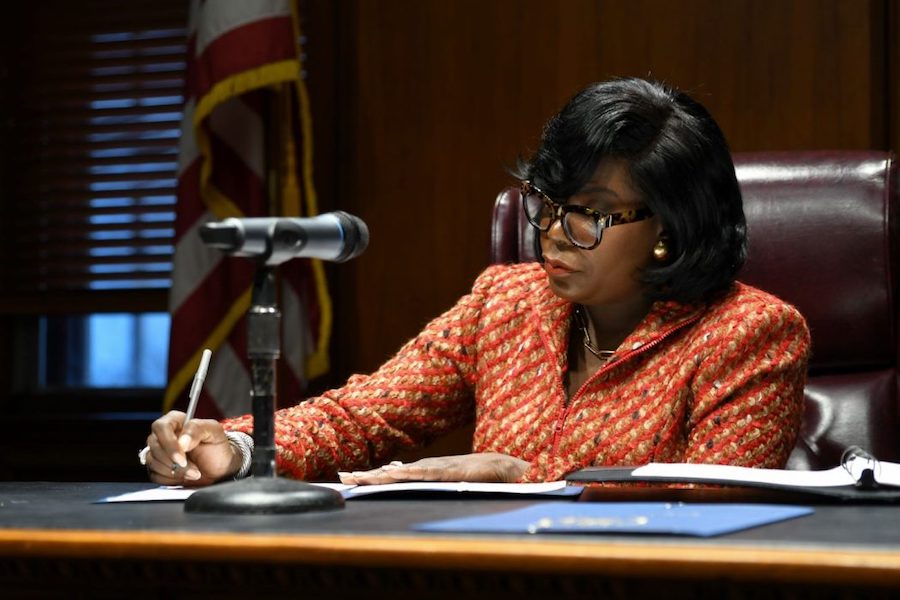
Philadelphia Mayor Cherelle Parker, who just signed a tinted-windows bill into law (photo via City of Philadelphia)
Check phillymag.com each morning Monday through Thursday for the latest edition of Philly Today. And if you have a news tip for our hardworking Philly Mag reporters, please direct it here. You can also use that form to send us reader mail. We love reader mail!
Philadelphia’s Latest Crackdown: Tinted Car Windows
Since the mid-1990s, Pennsylvania has had some pretty clear rules governing tinted windows on cars. Essentially, the law says that any tinting on car windows must allow 70 percent of light to get through. Windows need to be more transparent than not. But anybody paying attention in Philadelphia these days knows there are tons of cars on the street with very tinted windows.
There are all sorts of reasons that window-tinting enthusiasts could give you for why tinting is a good thing. Sunlight can damage your upholstery over time, especially leather upholstery. Tinting also blocks those harmful UV rays that you smear your skin with sunscreen to avoid in the summer. You can see better thanks to window tinting in certain situations, because the tinting blocks glare. And the film used to tint your windows can prevent your windows from shattering.
Of course, heavily tinted windows can also make it pretty impossible to see what’s happening inside a car or who’s behind the wheel.
Well, thanks to a new bill passed unanimously in City Council and signed into law on Wednesday by Philadelphia Mayor Cherelle Parker, officials now have a different tool in the campaign against darkly tinted windows. The new ordinance allows officials to issue $100 tickets to parked cars that have windows tinted darker than the state law allows. The difference here is that previously, law enforcement officials could only issue window-tinting citations during motor-vehicle stops.
The ordinance was the brainchild of Philadelphia City Councilmembers Mike Driscoll and Mark Squilla. Driscoll told Fox 29 that “the bad guys, the guys engaged in illegal activity … they’re tinting their windows so law enforcement, or cameras we have, don’t know who they are.”
Larry Krasner Gets In a Nice Jab at Columbia University
While cops in riot gear have moved in on various college campuses throughout the country amid protests over the war on Gaza, all is relatively quiet at the University of Pennsylvania, where the protests and encampment have just entered their second week. Philadelphia District Attorney Larry Krasner went on a fact-finding trip to the University of Pennsylvania campus on Wednesday afternoon. And according to a report in the Daily Pennsylvanian, Krasner had this to say about the way that Philadelphia should handle the situation: “The First Amendment comes from here. This is Philadelphia. We don’t have to do stupid like they did at Columbia. What we should be doing here is upholding our tradition of being a welcoming, inviting city, where people say things, even if other people don’t like them.” Hopefully, Philadelphia and Penn will continue to not “do stupid.”
Bradley Cooper Is Still Slinging Cheesesteaks
Back in December, I told you about Bradley Cooper and Danny DiGiampietro (a.k.a. the owner of Angelo’s in South Philly) turning up all of a sudden in Manhattan to sell cheesesteaks from a truck called Danny & Coop’s. Then Cooper had to go do all that Maestro and Golden Globe and Oscars stuff, and I kind of lost track of him and his cheesesteak adventures. The Danny & Coop’s Instagram account racked up a bunch of followers real quick but remains unpopulated. But Cooper and DiGiampietro just popped up again with the truck, this time in Las Vegas for some QVC event. Cooper served up cheesesteaks to Donna Kelce (she said that son “Trav” sent her) as well as to Martha Stewart, who snapped a photo of Cooper behind the grill looking like a bit of a deranged chef. No word on what’s next for Danny & Coop’s.
By the Numbers
$182: Lowest price on StubHub for a ticket to tonight’s Sixers playoff game in South Philly. If we advance to Game 7 — which we will, right?! — that game will be played in New York. And the lowest price for those tickets right now? (Yes, you can buy tickets for a hypothetical game, and yes, you’ll get a refund if the game doesn’t happen.) About $500.
5: Longtime Bernie Robbins employees who now own the jewelry company after husband-and-wife owners Harvey and Madalyn Rovinsky decided to pass it onto them instead of selling it. No word on if they have any of these old Bernie Robbins Howard Eskin bobbleheads sitting around in storage. One can only hope.
$15 million: What former Eagles linebacker Bill Romanowski and his wife allegedly owe in back taxes to the IRS. There are probably more than a few former NFL players out there cheering on the IRS. Romanowski wasn’t exactly a much-loved player, mostly because he liked to sucker-punch and spit at other players. His most memorable altercation while with the Eagles came in 1995, when he kicked a member of the Arizona Cardinals in the head. The refs kicked him out of the game. Sound like roid rage? Romanowski later admitted to taking steroids during his time as an NFL player.
Local Talent
Philly born-and-raised actor and former Hamilton co-star (he played Aaron Burr in the original cast) Leslie Odom Jr. had plenty to celebrate when he performed a concert at the Miller (née Merriam) Theater last night. Tony nominations came in on Tuesday, and Odom picked up a Tony nomination for Best Actor for his work in Purlie Victorious. In total, Purlie saw six nominations. If you missed the Broadway run, catch a televised version on PBS starting on May 24th. (You can read my post-Hamilton/pre-Purlie interview with Odom here.) Meanwhile, Philly music vet Adam Blackstone (yes, I interviewed him, too) received a nomination for his Hell’s Kitchen orchestration. We’ll find out the winners in June.
And From the Comin’-Home Sports Desk …
It takes more than an earthquake to shake up our Phils — though there was one in the second inning of their game against the Angels yesterday. That was the same inning in which the Phils scored on the Angels, with singles by J.T. Realmuto and Whit Merrifield, a walk by Cristian Pache to load ’em up, and a Kyle Schwarber single that brought two home. L.A. did get one back in the bottom half on a solo homer by Ehire Adrianza off our starter, Zack Wheeler, but nobody did much of anything after that except for a bunch of pitching changes.
The Phillies, who lead 2-1, have struck out 17 times today, their most in a game since July 23, 2019.
That night's lineup featured Scott Kingery, Cesar Hernandez, Maikel Franco, Adam Haseley, Roman Quinn and Nick Williams.
— Corey Seidman (@CSeidmanNBCS) May 1, 2024
In the eighth, off José Alvarado, the Angels got three singles but didn’t score, since one got runner picked off trying to steal. In our ninth, Merrifield doubled off reliever Luis Garcia; we’d been waiting for him to heat up.
Whit Merrifield is 2-for-3 today with a double, walk, steal and run.
He's 8-for-18 in his last five starts with two doubles and a homer.
— Corey Seidman (@CSeidmanNBCS) May 1, 2024
He then got to third on a wild pitch, but Brandon Marsh struck out. On came Gregory Soto, who got a ground-out, allowed singles to Zach Neto and Nolan Schanuel, struck out Jo Adell with men on first and third, and … got Taylor Ward to fly out. Sheesh, that was close!
The @Phillies are headed home after winning 7 of 10 on the road! pic.twitter.com/ciO5dvD2Ty
— MLB (@MLB) May 1, 2024
They’re back at CBP on Friday vs. the Giants, with a 6:40 start.
Any Sixers News?
Uh, yeah, in a magnanimous gesture, the gazillionaire Sixers owners teamed up with Fanatics to buy Sixers tix for 2,000 fans to go see the Game 6 against the Knicks tonight at Wells Fargo, so they can cheer for our guys and keep the New York cheers at bay. They’re mostly going to charitable organizations. And in even bigger news, Bricken 4 Chicken will run through the entire game and not just the second half! Tip-off is set for 9 p.m. Make some noise, Philly! And we believe, Tyrese, Joel, Tobias. We really do.
While you wait for the game, feast on this lovely ode to Maxey‘s Game 5 heroics from Mike Vorkunov at The Athletic.
All Philly Today sports coverage is provided by Sandy Hinsgton.
Art Museum CEO Sasha Suda Shares What Catches Her Eye Around Philly

Sasha Suda, director and CEO of the Philadelphia Museum of Art / Photography by Jauhien Sasnou
It’s going to be a busy summer for Gladwyne-based Sasha Suda, director and CEO of the Philadelphia Museum of Art, as she preps for this month’s launch of the “Mary Cassatt at Work” exhibit. At home, she’s parenting twins and planning rides on her motorcycle. Here’s what else catches her eye.
At Home
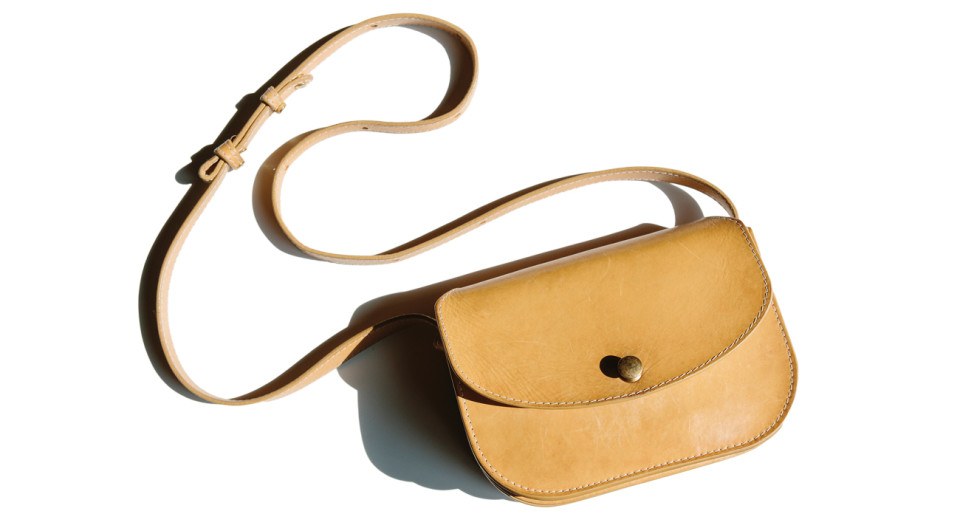
What I wear every day: My Lindquist Objects purse from Vestige in Fishtown.
Treasured jewelry: The wedding band my husband made for me.
Prized possession: My grandfather’s medical-degree diploma.
Wardrobe staple: A Watson Ellis suit tailored to accommodate my scoliosis.
Hair essential: The best clip for lots of hair is made by Georgia-based Machete.
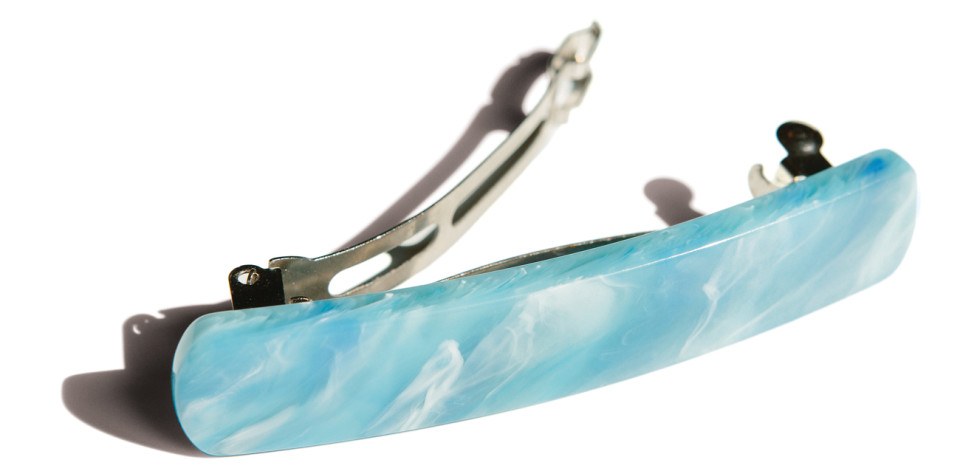
Morning ritual: I work out before I clock in as a short-order cook to nine-year-old twins.
Evening ritual: The New York Times’s “Connections” and mini-crossword.
Go-to gadgets: iPhone for everything and Remarkable 2 for note-taking.
On my playlist: Beyoncé’s “Texas Hold ’Em.”
Pets: We have two rescue pups, Gus and Chelsea.
On the Job
What I love most about my job: Learning new things every day.
Biggest inspiration: Most recently, the artist El Anatsui, who is expanding his studio, practice and ambition in his 80s.
On my desk: A pile of cords.
Passion project: A learning and engagement space, to connect with audiences in new ways.
Work event I’m excited for: The opening of the Rodin Garden bar this month. We are featuring a contemporary art project and programming partnership with the Pennsylvania Horticultural Society.
On the Go

Coffee stop: Homeroom in Gladwyne, for a latte and coffee klatch.
Mode of transportation: A Toyota Highlander for the commute, and my folding Brompton bike from Rittenhouse’s Trophy Bikes for moving through the city.

Favorite boutique: Rennes in Old City.

Restaurant order: At Stir Restaurant at the Philadelphia Museum of Art, chef Hoon Rhee makes the best lunch salad with salmon in town.

Beer spot: I go to Punch Buggy Brewing Company in Kensington. I love IPAs.
Next vacation: A short visit to Calgary, Alberta, to camp out in the mountains.

Upcoming business trip: Mexico City, for the 2024 gathering of global museum directors.
Spring plans: I have a BMW motorcycle, and I’m looking forward to riding it again!
Published as “Connoisseur: Point of View” in the May 2024 issue of Philadelphia magazine.
Ridiculous Delco Battle Erupts Over a Kid on a Bike

The parents of the 11-year-old Havertown biker known as Oneway Lilman recently put up this “My Neighbor Is a Karen” sign on their Delco lawn. (photo via Facebook)
Check phillymag.com each morning Monday through Thursday for the latest edition of Philly Today. And if you have a news tip for our hardworking Philly Mag reporters, please direct it here. You can also use that form to send us reader mail. We love reader mail!
Ridiculous Delco Battle Erupts Over a Kid on a Bike
“These fucking people are something else,” says West Philly native Alexander Santacroce, who now lives with his wife and four kids in a quiet residential section of Havertown. “It’s just amazing.”
The “people” Santacroce is referring to are the same people he’s targeting with a newly installed sign on his lawn. It reads: “My Neighbor Is a Karen.” But make that neighbors, plural.
The controversy surrounds Santacroce’s 11-year-old son, Alex, who likes to ride his bike, e-bikes and Razor scooters around Havertown. Okay, maybe that’s putting it mildly. Alex is a sponsored biker, a pre-teen “bike life” influencer, and he’s everywhere.
In the bike-life world, he’s known as “Oneway Lilman.” And Lilman has caught the attention of Meek Mill, and appeared on The Jennifer Hudson Show and various local news programs. His YouTube channel has 1.3 million subscribers, and another 696,000 people follow him on Instagram.
He’s the kind of kid who has Louis Vuitton sending him bike helmets and promoters paying him to show off his moves in Florida and California on a fairly regular basis. He gets invited to events like the Teen Lounge Kickoff Party at New York Fashion Week:

Delco biker Oneway Lilman attends the Teen Lounge NYFW Kickoff Party in February (Getty Images)
The problem, according to some Havertown residents, is that the boy rides his various bikes and scooters all over his neighborhood and out into other nearby Delco neighborhoods. And some neighbors don’t take too kindly to his antics. Popping wheelies. Zipping around on sidewalks. You know, doing the kinds of things that an 11-year-old kid with a bike will tend to do.
In the past several months, posts about Lilman, some of his riding pals, and some other kids who may or may not have any connection to him have appeared in various neighborhood social media groups. According to Santacroce, one commenter referred to Oneway Lilman and his friends as “feral animals.” Reactions to the handwringing have ranged from folks joining in on the outrage to others asking what all the fuss is about. (One resident joked that popping wheelies in the street is definitely a gateway to drug abuse.)
As you might expect, some of these outraged neighbors have called the cops.
Joe Hagan, deputy chief of police in Haverford Township, says the department has received numerous calls about bikers and that the cops have responded to at least six incidents involving Oneway Lilman specifically. Hagan explains that some of the biking does, in fact, amount to illegal activity. Santacroce says his household has received at least two citations from the police department, including one just the other day, for operating a vehicle — any type of bike or scooter is technically considered a vehicle — illegally. And as soon as he received this latest citation, the “Karen” sign went up on his front lawn.
Santacroce claims that all of his son’s biking activities in Havertown have involved regular, pedaled bikes — like BMX bikes — as well as e-bikes and electric scooters. But Hagan says some of the reports about Oneway Lilman have included motorized dirt bikes, which Santacroce says they do own.
It’s not just the cops that have gotten involved, according to Santacroce. He alleges that one of his neighbors called the local Child and Youth Services (CYS) department because Lilman was riding his bike in his underwear. “Oh my God, this biker is unclothed and neglected!” Santacroce imagines the resident told CYS. “What they didn’t know is that my son had a boxer-briefs sponsor. They are basically the same as shorts. So we had him outside shooting a video for the brand.”
I asked Santacroce why he thought the neighbors were so concerned about all this.
“One of these cops once told me that the community doesn’t like it because when he’s out there in parking lots at shopping centers, it brings in kids from other townships and West Philly,” Santacroce responded. “He’s well-known, and people want to see him.”
Hagan laughed at that suggestion: “The son is just not famous. … We’re talking maybe 10 kids will come see him do stunts.” As far as Hagan is concerned, he says he doesn’t have a problem with the kids riding bikes. He just wants them to do so safely and not on busy main roads or sidewalks.
“What I’m actually concerned about is having to show up at somebody’s house to tell them that their kid got killed while doing stupid things on a bike,” Hagan says. “We take it seriously because of that. And because the people who move here do so because they want to live in a quiet neighborhood. Listen, the kid is good. The kid has talent. But he can’t just show off his talent in the middle of the street.”
Local Talent
It sure is nice when the local talent that I get to feature in this section is, well, us. You may remember that Philly Mag just won the coveted National Magazine Award for our fabulous cover story about hoagies. (FYI: There are lots of awards out there. But winning a National Magazine Award in particular is a really big deal.)
Well, I am now thrilled to tell you that we were just nominated for two James Beard media awards: one for that same hoagie cover story, and one for Jason Sheehan’s fascinating profile of Alexandra Holt and her restaurant Roxanne. Also nominated: the New Yorker, New York Times Magazine, and other prestigious publications. Good company to be in! Now go eat a hoagie to celebrate. We’ll help you pick.
And in other local-talent news, congrats to Main Line political commentator Michael Smerconish, who is celebrating 10 years at CNN. You can read my exclusive interview with him here. He may be one of the few people I know who are huge fans of Reagan and Rizzo but also Obama.
By the Numbers
5: KYW Newsradio employees who just lost their jobs thanks to the financial turmoil of station owner Audacy. One of the cuts was reportedly longtime KYW reporter Hadas Kuznits. Sad to see her go. But I will also say this: I can only get a KYW radio signal in my car one-10th of the times that I try. Not sure what’s going on there.
$20 million: Amount a former Atlantic City casino owner is suing for over the rights to Miss America. The guy doing the suing is the former owner of Revel, otherwise known as one of the biggest casino failures in Atlantic City history.
$190,000: Cash that a man is accused of stealing from the back seat of a Tesla outside a Bensalem gas station on Monday. Now, I know the obvious question is: Why would somebody have $190,000 in cash in their car? Apparently, the victim services all those annoying “skill-based” gambling machines that have popped up in lots of bars, bodegas and gas stations throughout the region.
And From the Whoa-Was-Not-Expecting-That! Sports Desk …
The fifth game in the Sixers’ down-3-1 playoff series with the Knicks was last night, and there had been rumors about Joel Embiid all day — he skipped the morning shoot-around and was reported to be suffering a migraine. He looked like bloody hell reporting to Madison Square Garden.
https://twitter.com/NBA/status/1785432905868541952
For all the shit Tobias Harris has had thrown at him this season, he scored our first points — a three. It helped that neither team was hitting any shots; five minutes in, the score was still 5-0. The Knicks soon regained their wits. Still, with help from an 8-0 run, we were up 26-17 at the close of the first quarter. Paul Reed spelled Embiid at the end and stayed in for the second, and the Knicks tied it at 28-28 three minutes in. Back came Embiid, but New York grabbed the lead with a 19-2 run. Yikes. At the half: 49-43 Knicks.
In the third, the Sixers tied it back up in the opening minutes, then took the lead, 53-51, on a 10-2 run. After that, it was seesaw time through the quarter’s close: 70-69 Knicks. Deep breath, Philly. New York was out front on a 13-2 run with five minutes to go in the game as Embiid sat for a spell, but the Sixers refused to say die; Maxey was having a monster night. But then we were down six with 30 seconds to go. It seemed over. Then Maxey went on an impossible 7-1 run in the final half minute to force overtime!
TYRESE MAXEY. THREE-POINTER TO TIE THE GAME IN THE FINAL SECONDS WITH THE SEASON ON THE LINE
TOM MCGINNIS ON THE CALL pic.twitter.com/ZHAAPbMuzw
— Nick Piccone (@_piccone) May 1, 2024
The Garden was real, real quiet. The Sixers were not, alas, a team made for overtime — not this season. Well. It was a good run, guys — most of it, anyway. Oh, wait. Hold on, hold on!
"I GOT YOU" – MAXEY 🤝 EMBIID
SIXERS FORCE GAME 6 💪 pic.twitter.com/5AP5Bsrm3w
— NBA (@NBA) May 1, 2024
And they did! WE WIN IN OVERTIME, 112-106! Holy f’ing shit! Rematch in Philly on Thursday — be there!
How’d the Phillies Do?
Well, they didn’t score in the first inning in their rematch against the Angels, but in the second, after Nick Castellanos singled and Bryson Stott walked, Kyle Schwarber singled to give us the 3-0 lead ahead of pitcher Tyler Anderson. Zach Neto led off L.A.’s fourth with a solo homer off starter Spencer Turnbull to make it 3-1. That was pretty much it until Turnbull gave up a single in the sixth and came out for Yunior Marte, and that’s when things went all to hell; he gave up a fielder’s choice, a homer, a double and a single, and just like that, it was 5-3 Angels.
In the seventh, off reliever Matt Moore, Trea Turner singled with one out and then stole second, and Alec Bohm singled him home: 4-5. In the ninth, a Castellanos homer off Carlos Estévez tied it, and a Stott double and Johan Rojas homer (!) gave us a 7-5 lead. Could Jeff Hoffman hold onto it? He could! Great comeback win on a great night (mostly — read on) for Philly sports fans. One more Angels match, this afternoon at 4:07.
Any Doop News?
More like Poop News. The Union took up their suspended-because-of-sodden-field March 9th game against the Seattle Sounders at home in Chester last night, and it did not go well. They took the continuation up at the six-minute mark, and Seattle scored 13 minutes in, 22 minutes in, and again, on a PK, in the 37th, to put the Union down 3-0 in the first half. WTF. In the second half, goals two minutes apart by Jack McGlynn and Dániel Gazdag evened it up a bit, but the lead was too much, and that was the final: 3-2 Seattle. Like I said, Poop.
All Philly Today sports coverage is provided by Sandy Hingston.
Nominations Are Now Open for the 2024 Be Well Philly Health Hero Challenge

We are thrilled to announce that the Be Well Philly Health Hero Challenge presented by Independence Blue Cross is back for another year!
Whether you’ve been with us for a while or are new to the Be Well community, our annual Health Hero Challenge — now in its 13th year — recognizes medical professionals, frontline health workers, nonprofit leaders, teachers, coaches entrepreneurs, and community activists who are working to make real, lasting change in their communities from a health and wellness perspective.
Previous Health Hero winners include:
- Martino Cartier, celebrity stylist and owner of his eponymous salon in Sewell who provides high-end hair replacement to women going through chemotherapy and grants wishes to children battling cancer through his nonprofit, Wigs and Wishes.
- Robin Cohen, co-founder and CEO of the Sandy Rollman Ovarian Cancer Foundation who supports women and families navigating and/or living with the realities of an ovarian cancer diagnosis.
- Armenta Washington, a senior research coordinator for the community outreach and engagement program at Penn Medicine’s Abramson Cancer Center who helped create a drive-through Fecal Immunochemical Test (FIT) service so that at-risk community members had access to preventative care and could determine if they needed a referral for a colonoscopy.
This year’s nomination period begins today and runs through 11:59 p.m. on May 30th. After that, we’ll narrow down to 10 semi-finalists, and then put the ball back in your court to determine who will be named the winner. And again, you can nominate anyone (including yourself!) who has done something positive for the health and wellness of their community in recent years — as long as they/you live in Pennsylvania, Delaware, or New Jersey, and are at least 21 years old.
Thanks to our amazing sponsor Independence Blue Cross, the winner will receive a $15,000 donation to the charity of their choice, and the two runners-up will each receive a $2,500 donation to their selected nonprofits, as well.
If you or someone you know is deserving of our 2024 Be Well Philly Health Hero award, nominate them here! You have until 11:59 p.m. on May 30th.
Relive the Pizza Nights of Your Childhood at This Neighborhood Spot

A slice of pepperoni and a slice of white at Pizza Richmond / Photograph by Gab Bonghi
Every neighborhood deserves a great pizza place, and that’s exactly what Pizza Richmond is: a great pizza place.
It’s nothing more than that, but also nothing less. It’s just pizzas, a couple salads, soft-serve from 1-900-ICE-CREAM, and these wild, experimental specials (charred onion and sherry cream; slices of roasted sweet potato with a maple and sage white sauce), but again: just pizza, no matter how non-traditional.
Pizza Richmond is a sister to Pizza Shackamaxon, the Fishtown slice shop opened by the team behind Sally and Martha. And Richmond has that same kind of neighborhood gravity — drawing crowds and stacking up lines at the door at prime time, making itself a meeting place. Since there’s no phone, no online ordering, if you want a slice, a whole pie or a salad, you gotta show up. You have to stand there and wait, meet the neighbors, maybe make a friend.
AT A GLANCE
Pizza Richmond
3136 Richmond Street, Port Richmond
CUISINE: Pizza
PRICES: $$$
Order This: A red, a white, and some ice cream while you wait.
The house red sauce leans savory, not sweet. The crusts are thin but not crackers — pliable almost all the way through. Not quite New York-thin, but more Philly-thin, with some strength to them — some chew. Each pie comes out of the electric PizzaMasters oven in the kitchen with some char, and I’d argue that char matters. Char provides character. Its inconsistency and imperfection make you feel that real people cooked your pie, not robots, and it becomes part of the flavor you remember — those blistered crusts and leopard-spotted bottoms.
Richmond’s red with pepperoni is solid. There’s a bite to it, mostly from the pepperoni, and every slice bleeds grease down your arm when you fold it. It’s a pizza made for ruining shirts. And each slice is large enough to protect you from a sudden rainstorm.
The white, on the other hand, is just extraordinary. Blobs of smooth ricotta, black pepper, this pesto-y sting that rides on top of all that cheese and dough, then whole cloves of roasted garlic tucked into the cheese, caramel-brown and soft enough to smear like butter, sweeter than you ever thought garlic could be. You can smell it from the doorway. Pick up a slice, and the scent will linger on your fingers for an hour.
The smartest thing Pizza Richmond ever did was not very much at all. It’s a restaurant that seems to exist to prove the axiom that it’s better to be very good at one thing than mediocre at a lot of things. That success lies in picking your one thing and doing it very well. Yes, it’s expensive. Pies cost around $30. The prices seem like robbery — until you see the size of the pies. Except for the cost, this is everything a neighborhood pizza shop needs to be.
And nothing more.
2 Stars — Come if you’re in the neighborhood
Rating Key
0 stars: stay away
★: come if you have no other options
★★: come if you’re in the neighborhood
★★★: come from anywhere in Philly
★★★★: come from anywhere in America
Published as “A Little Goes a Long Way” in the May 2024 issue of Philadelphia magazine.
It’s 2024, and Michael Smerconish Still, Somehow, Refuses to Take Sides
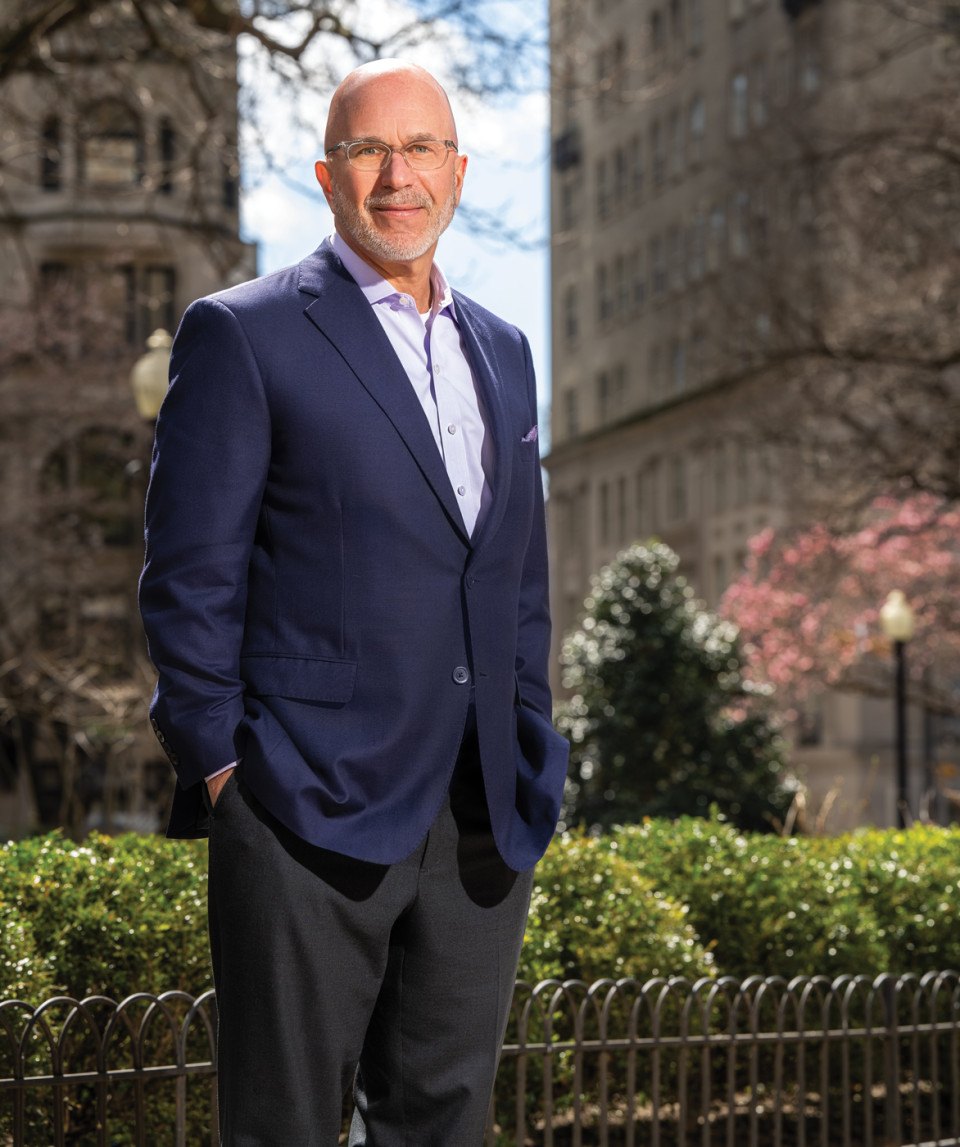
Michael Smerconish / Photograph by Linette & Kyle Kielinski
He was a Reagan/Bush guy all the way. Pals with Rizzo. But by the mid-aughts, Main Line journalist Michael Smerconish found himself throwing all his weight behind Barack Obama. In a nation where you’re now forced to pick a side or be labeled a traitor, Smerconish picks none.
Hi, Michael.
Exactly on time. I like it.
I’m actually 45 seconds early. I never want to be late for anything.
Listen. If you’re not early, you’re late. That’s my mantra.
Congrats on 10 years at CNN. Where does the time go?
That’s something I’ve been thinking about a lot lately, given that milestone and also just over 10 years on SiriusXM. Holy shit. It feels like yesterday. And you’ve been at Philly Mag for quite a while!
I enjoy the freedom I have here.
You just articulated the best thing about my work. They let me do my own thing. You can give me credit for a segment if you like it. And you can blame me if you don’t. I do my CNN show remotely, so I’m not in the office and exposed to the groupthink of the network.
You, of course, have your three-hour morning show on satellite radio Monday through Friday, and then you’re live on CNN Saturday morning. What the hell do you do on Sunday?
[Laughs] Saturday night is the only night I don’t set an alarm for the next morning. Of course, I’m still up no later than 6 a.m. on Sunday. I can’t help it.
So your only night to have any fun is really on Saturday.
That’s true, but my wife and I don’t lead a very active social life. She works seven days a week.
Is this limited social life a product of the pandemic, or has it been that way for some time?
I do so much talking during the course of a day, so to not have to be “on” is a treat. I remember when our kids were young, I was always expected to be the life of the party at back-to-school nights and other school functions, because I speak for a living. But the thing is, I’m just not the life of the party.
I was never much of a talk-radio listener, so I think my first exposure to you was actually through the opinion columns you wrote for the Daily News. And I enjoyed the fact that I never knew quite where you were going to land on a given topic. At times, you could be quite conservative. But on some issues, not at all.
I actually wrote for the Inquirer, too. Fifteen years. Something like 1,072 columns. I published a book looking back on 100 of them, and I had to take ownership for some I wish I hadn’t written.
I recall you getting some flak for defending a controversial Daily News cover.
The Daily News published a cover that showed individuals on the lam who were wanted for murder. It turned out that at that time, there was no one wanted for murder whose face was white. The cover didn’t go over so well. The Daily News was embarrassed and apologized for it. But I thought the cover was entirely appropriate and said so.
Would you still feel that way today? A lot has happened since then, and some media outlets, including the Inquirer and Daily News, have changed the way they cover crime.
I just think you need to do things consistently. Let’s apply the rules across every demographic. The way I see it, now we have rules for some people that we don’t apply to others.
I haven’t left the Republican Party. They left me. It just doesn’t look like the party I grew up with.”
Why did you make the switch from terrestrial radio to satellite?
My goal with the local radio show was to get into syndication, which is what happened, and I was eventually on more than 100 stations across the country. But I did not have a good relationship with the syndicator, and there were some issues with some of the things that I said, particularly for the conservative radio stations we were on in the country. It wound up being a bad partnership. SiriusXM told me they would let me do my thing.
Prior to your radio career, you worked for an incredibly polarizing figure: Frank Rizzo. What did you do for him?
I was in my third year of law school at Penn, and Rizzo hired me to be the political director in his 1987 rematch against Wilson Goode. I had just run the Philadelphia portion of Arlen Specter’s 1986 reelection campaign. Rizzo became a Republican in ’87 to run against Goode, and he brought me in because he needed people who knew the Republican lay of the land. What it really meant was that I was, for 365 straight days, one of four people in a car with Frank, crisscrossing the city for campaign events. Those car rides are something I should have written a book about. Incredible stories.
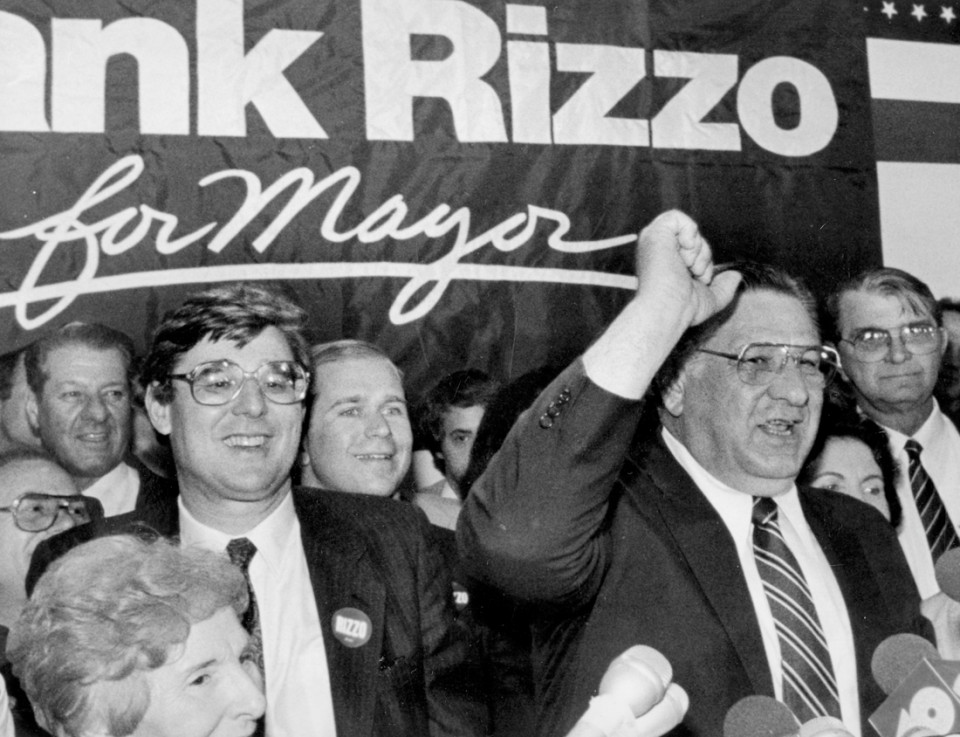
Michael Smerconish (center) with Frank Rizzo in 1987 / Photograph courtesy of Michael Smerconish
What are your impressions of Rizzo as a person?
They broke the mold, to quote the old expression. There was no one like him. We had a very close relationship at the time. He was street-smart, loyal, funny. And I believe he was well-intended, even when he made mistakes. He had the city’s best interests at heart. Was he perfect? No.
Should there still be a statue of him across from City Hall?
Yes.
A lot of people these days would find it hard to believe that Rizzo was a Democrat for most of his career. You, in fact, started out as a Republican. Was that just because your parents were Republicans?
Like most of us back then, I registered, without much thought, for the party of my parents. I came of age in the Reagan ’80s, and if the Republican Party today were like the Republican Party of Reagan and George Herbert Walker Bush, I would still be a Republican. I haven’t left the Republican Party. They left me. It just doesn’t look like the party I grew up with. Now, let me be clear: I am not a Democrat. I’m an independent.

Michael Smerconish with Arlen Specter in 1986 / Photograph courtesy of Michael Smerconish
You really were a Reagan/Bush guy. You founded the Youth for Reagan/Bush at Lehigh University. Do you reflect positively on their legacies?
Yes. Both of them. I have no regrets.
Many LGBTQ people would take issue with your stance, pointing out Reagan’s failure to respond to the AIDS crisis.
That was sad and a mistake. Listen, I can’t defend his record with what we now call LGBTQ people relative to the way we see the world today. If Reagan were alive today, he would see the world differently. I am not holding him accountable for his 1982 perspective, just as I hope nobody holds me accountable for some of my ways of thinking in 1982. Really, I hope we’ve all evolved.
I know a fair number of more moderate Republicans who left the party when Trump became a reality. But you left earlier, didn’t you?
In the year 2000, when it was George W. Bush/Gore, I was still very much on the train. Four years later, when the final PA rally for Bush was in a Bucks County cornfield in front of 20,000 people, I was the master of ceremonies. But I became disenchanted — not for the issues we think of today; not because of extremism. I came to believe that he was no longer looking for Osama bin Laden. He made a big mistake diverting into Iraq. And I was carrying the torch for more than 3,000 people who died on September 11th. We needed to kill those responsible.
I came to interview Barack Obama a dozen times, including when he was president — I did the first interview with him from the White House — and if you go back to listen to my early tapes with him, as I have done, you will hear this junior Senator from Illinois telling me he would find and kill Osama bin Laden even if he had to do so in Pakistan. And that’s how the story ended. I voted for Obama and am happy I did so.
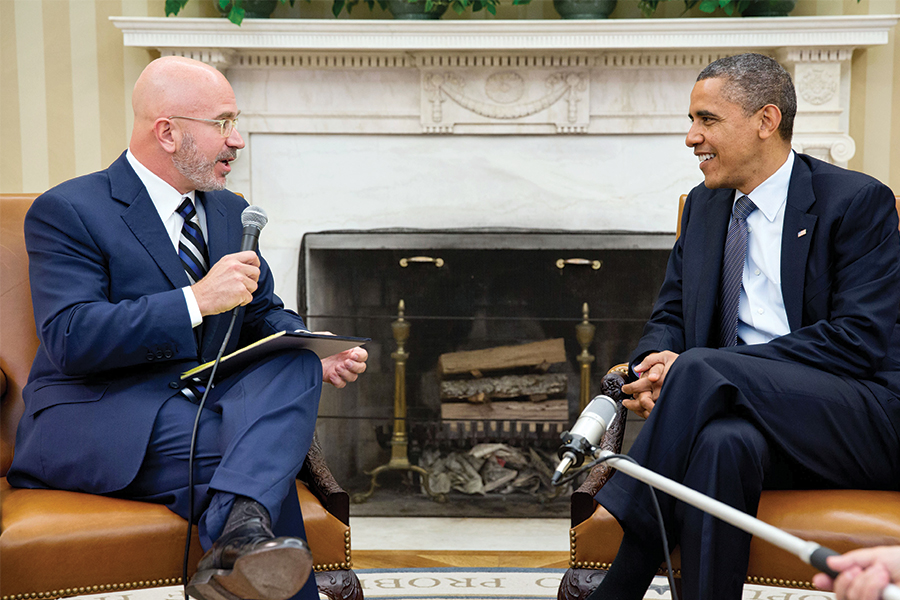
Smerconish interviewing Barack Obama in 2012 / Official White House photo by Pete Souza, courtesy of Michael Smerconish
Getting back to this idea of falling to the left on some issues and falling to the right on others, I feel like it’s much harder to do that today. Both “sides” seem to have a “You’re either with us or against us” mandate and are perfectly happy to burn it all down. There’s no compromise. There’s no middle ground.
I think that is an accurate description, but that’s what is killing us. I’m on a mission through my shows to prove that you can build an audience without being polarizing, while also being civil. The fact is, there is still far more that we have in common than what divides us, but you tune into most cable news shows and you wouldn’t know that, because it’s all about eyes and ears and mouse clicks. And oh my, how easy it would be for me to prepare for tomorrow’s radio show and Saturday on CNN if I just toed the party line. I wouldn’t have to do a fucking thing. I could just read talking points.
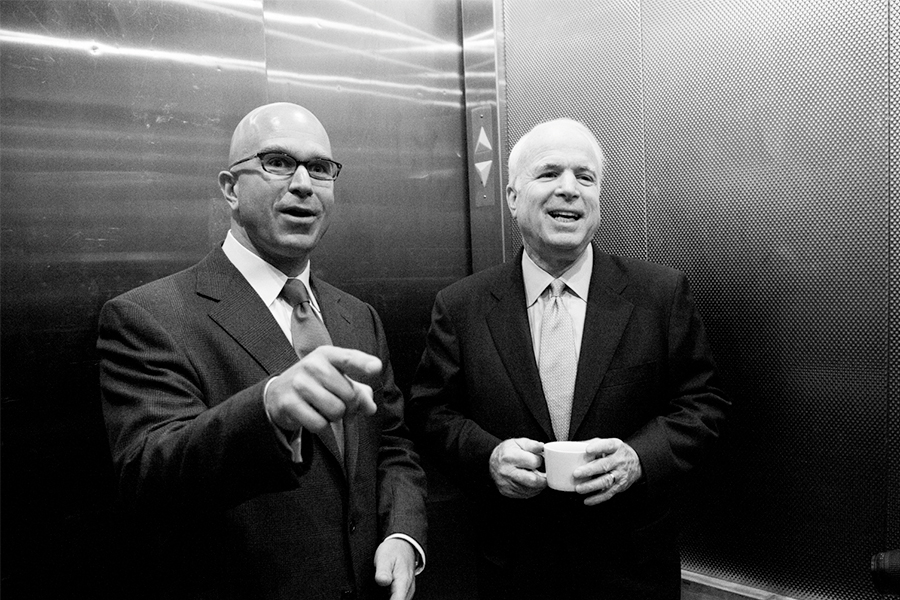
Michael Smerconish with John McCain in 2006 / Photograph courtesy of Michael Smerconish
In terms of your CNN show, I can only imagine the prep that goes into it. How often do you find yourself scrambling at the last minute to try to keep up with the news of the day?
I can’t tell you how many times in the age of Trump we had to tear up what we had on Friday and start new for Saturday. When I began at CNN, we were taping my show on Friday night and airing it at 9 a.m. on Saturday, and even re-airing it at 6 p.m. But now, the news cycle is shifting constantly, and it’s just impossible to do that. So now I deliver the show live.
I was pleased when CNN named you the temporary replacement for Chris Cuomo after his 2021 scandal. I thought you’d get the permanent job. But that didn’t happen.
[Laughs] There’s definitely a pattern of me being the sixth man on the court. It’s remarkable how many times I invested sweat equity into gigs that never panned out. During the same five-year period in the 2000s, I was the principal fill-in for Chris Matthews on Hardball and Bill O’Reilly on his radio show. There were even times when I would do my own radio show and both of those shows in the same day. But when O’Reilly quit radio, they told me, “Hey, you do a great job, but we need a ‘name.’” And they got Fred Thompson. With Hardball, it was, “Hey, you do a great job, but we are young and liberal and nerdy, and you are none of the above.”
In 2008, MSNBC did the Race for the White House show, which was solely focused on the campaign. The host was David Gregory, and the panelists were yours truly, Rachel Maddow, and Time magazine’s Washington bureau chief, Jay Carney. Well, Gregory gets Meet the Press, Maddow gets a nightly show of her own, Carney becomes the press secretary for Biden and then Obama, and I’m still not in prime time. Before CNN, I was at MSNBC. Joe Scarborough was the 10 p.m. host on MSNBC, and I became his principal fill-in. Don Imus had his radio show in the morning with an MSNBC simulcast, and when Imus was fired for making a racist statement, who got the emergency call? I was in the chair on Monday. And then they gave that job to Scarborough, and his 10 p.m. gig didn’t come my way, either.

Michael Smerconish on Election Night 2016 with Nia-Malika Henderson, David Axelrod, Gloria Borger, and Anderson Cooper / Photograph courtesy of Michael Smerconish
Almost comical.
I’ve delivered a number of commencement speeches, and for the one I gave at Temple’s school of media, my whole speech was to walk through in detail all the things I worked hard for and didn’t achieve. I thought it was more valuable for them to hear about the failures and the reality of the business.
So will you ever have your own prime-time show?
Hmmm. I am not currently looking to do anything different. I am happy with both radio and television. And I have a pair of podcasts. Plus, I do a daily YouTube. And I have a daily newsletter. I also do paid public speaking all over the country.
What do you speak on?
Currently, I do a presentation I call the Mingle Project. It’s all about the need for common experiences. The world connected by the internet has made us disconnected from one another and has fueled polarization and affected our mental health, especially on the part of our youth.
Due to the nature of my job, I’m so hyper-focused on local news that I find myself unable to follow national and international news as much as I’d like to. Is the reverse true for you?
Something had to give for me, and sadly, that has been local news. If you were to ask me about Cherelle Parker, I wouldn’t be able to say much other than that I wish Allan Domb had won the election. I wish I could pay more attention to local news, but I certainly won’t be able to until after November.
Perhaps I can sell you a Philly Mag subscription.
[Laughs] I’ve had a Philly Mag subscription for many years. I think it’s still the glue that holds together the community, and I really fear the death of local newspapers and magazines. We need to be reminded of our commonalities, and I think you guys do that very well.
Democracy is in peril if Trump is elected. But I’m not gonna say that it’s an entirely rosy picture if Biden is reelected.”
Who will you vote for on November 5th?
Um. I don’t know, because I don’t know what the field is going to be. I’ve been eager to see what comes of the No Labels movement, but I’m increasingly pessimistic. There’s a market but not a candidate. They are struggling to find a ticket that is credible. But I’d love to see the moon and stars line up for something other than Republican or Democrat.
If it comes down to Biden or Trump?
I think they are both flawed.
Biden fans say democracy is in peril if Trump wins. Trump fans say the country will collapse if it’s Biden. What’s your perspective?
Democracy is in peril if Trump is elected. But I’m not gonna say that it’s an entirely rosy picture if Biden is reelected.
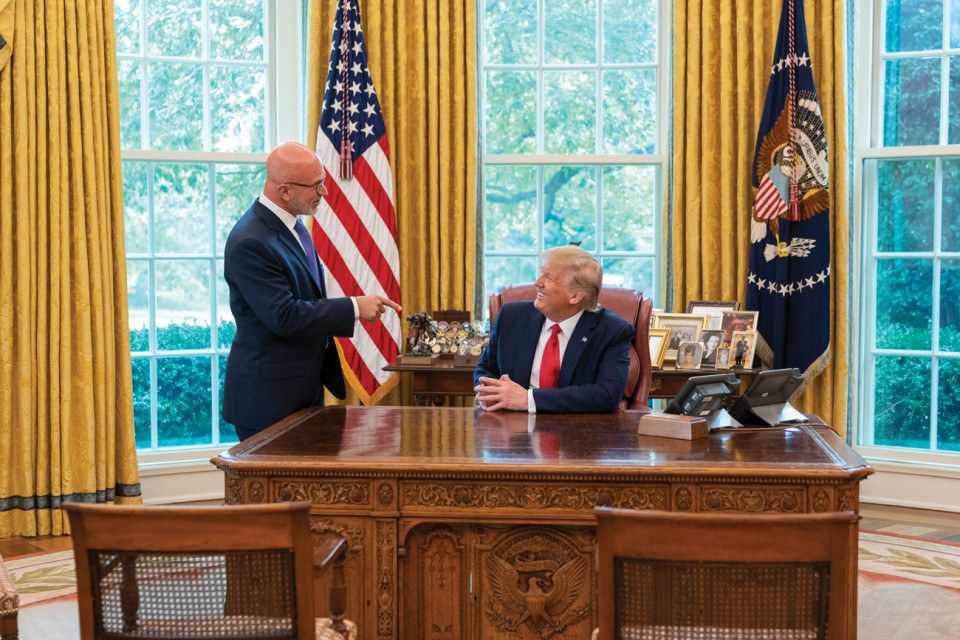
Michael Smerconish with Donald Trump in 2017 / Photograph courtesy of Michael Smerconish
Okay, getting off the subject of the coming American apocalypse, you graduated from Penn Law. Penn’s name has been dragged through the gutter in the last several months, and Penn president Liz Magill was ousted. Should she have been?
No. Liz Magill was tone-deaf during her Congressional testimony. She should have slammed her fists on the table and condemned Hamas. She and the other two school presidents that testified, they are all eggheads. They did not have street smarts. But the pendulum has swung so far that good people are afraid to express their opinions.
You ran unsuccessfully for the state legislature while you were in law school. Any thoughts of running for public office again?
I’ve certainly thought about it. I looked at the U.S. Senate race in the last cycle. I thought John Fetterman and Dr. Oz were both deficient.
Finally, I know you and your wife, Lavinia, have lived in Villanova for many years. Are you one of those suburbanites who are afraid to come into the city?
No. I lived for a decade in Center City and still feel very connected to it. I am concerned by what I see, but I still love the city. We do the CNN show from a studio in the city. I do business in the city. And I definitely eat in the city!
Where do the Smerconishes enjoy eating?
Just pull up Stephen Starr’s website and pick one. If it’s my birthday, Dandelion. We also love Parc. Otherwise, it’s takeout from Villa di Roma. Or a pizza from Marrone’s in Ardmore. I can’t get enough of that pizza. Basically, just give me anything with red sauce on it and I’m good.
This interview has been edited for length and clarity.
Published as “Big Talker” in the May 2024 issue of Philadelphia magazine.
Philadelphia Magazine Nominated for Two James Beard Media Awards
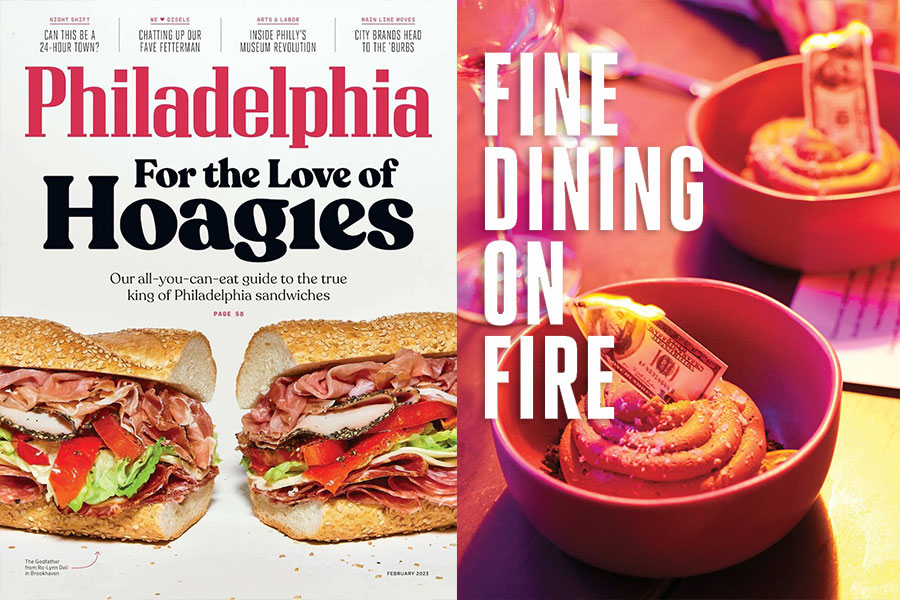
Philadelphia magazine’s “All Hail the Hoagies” package and Jason Sheehan’s profile of Alexandra Holt, “Fine Dining on Fire,” have been nominated for James Beard Media Awards. / Left: Photograph by Michael Persico. Food styling by Emilie Fosnocht. Design by Jamie Leary. Right: Photography by Rebecca McAlpin
The James Beard Foundation just announced its nominees for the 2024 Media Awards, and Philadelphia is a finalist in two categories: Dining and Travel, and Profile.
The James Beard Awards are considered one of the nation’s most prestigious honors and are meant “to recognize exceptional talent and achievement in the culinary arts, hospitality, media, and broader food system, as well as a demonstrated commitment to racial and gender equity, community, sustainability, and a culture where all can thrive.”
Our February 2023 package “All Hail the Hoagie,” which just won a 2024 National Magazine Award in Lifestyle Journalism, is up for an award in the Dining and Travel category for “exemplary and comprehensive service journalism that relies on both critical voice and thorough research to bring a variety of dining options into perspective.” The package, edited by Bradford Pearson with Hannah Albertine, Adam Erace, Victor Fiorillo, Regan Fletcher Stephens, Carla Shackleford, Laura Swartz and Sandy Hingston, is nominated alongside entries from the Philadelphia Inquirer and the Los Angeles Times.
“It’s an incredible honor to be nominated for a James Beard Award, even more so for a feature that honors the most Philadelphian of foods,” says features editor Bradford Pearson. “When we were working on this package, we aimed to make it just as useful for a local as a tourist, and to be nominated in this category specifically means we did just that.”
Philadelphia’s restaurant critic Jason Sheehan is also up for an award, for his profile of Alexandra Holt. Titled “Fine Dining on Fire,” this story explores how Holt’s experimental restaurant, Roxanne, subverts our expectations of fine dining while challenging sexism within the restaurant industry. “No one deserves this kind of recognition more than Alex,” Sheehan says. “I will always be on the side of the anarchists and revolutionaries in this industry, and she certainly knows how to mix a mean Molotov.”
Sheehan’s competition includes the New Yorker’s Hannah Goldfied and New York Times Magazine’s Alex Halberstadt. “I love it when Philly gets put up against the big kids in New York City. It’s a chance to remind everyone that we play just as well as they do — and look cooler doing it,” Sheehan says.
“Philadelphia magazine has a very proud tradition of covering the Philly food scene with voice and expertise,” says editor Brian Howard. “These nominations reinforce what our readers know intuitively: Like the dining scene we write about, our coverage is world-class.”